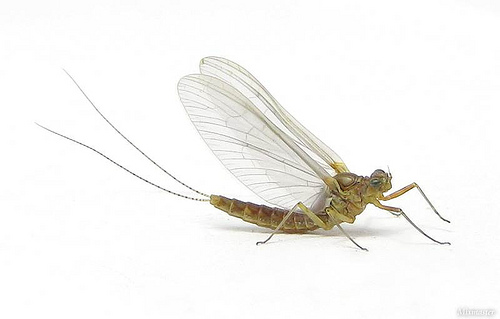Mayfly nymphs are among the most sensitive taxa to neonicotinoids. The present study presents the acute and chronic toxicity of 3 neonicotinoids (imidacloprid, thiacloprid, and thiamethoxam) to a mayfly species (Cloeon dipterum) and some notes on the seasonality of the toxicity of imidacloprid to C. dipterum and 5 other invertebrate species. Imidacloprid and thiamethoxam showed equal acute and chronic toxicity to a winter generation of C. dipterum, whereas thiacloprid was approximately twice as toxic. The acute and chronic toxicity of imidacloprid was much higher for the C. dipterum summer generation than for the winter one. The acute toxicity differs by a factor of 20 for the 96-h 50% effective concentration (EC50) and by a factor of 5.4 for the chronic 28-d EC50. Temperature had only a slight effect on the sensitivity of C. dipterum to imidacloprid because we only found a factor of 1.7 difference in the 96-h EC50 between tests performed at 10 8C and 18 8C. The difference in sensitivity between summer and overwintering generations was also found for 3 other insect species. The results indicate that if the use and environmental fate of the 3 neonicotinoids are comparable, replacing imidacloprid by another neonicotinoid might not reduce the environmental impact on the mayfly nymph C. dipterum. The results also show the importance of reporting which generation is tested because sensitivity values of insects in the summer might be underestimated by the experiments performed with neonicotinoids and an overwintering population.
Source: Paul J. van den Brink et al. Environ Toxicol Chem 2016;35:128–133

- Log in to post comments

Neonics follow Druckrey-Küpfmüller equation
Dr. Francisco Sánchez-Bayo calculated the estimates of the exponent n in Druckrey-Küpfmüller’s equation for all the acute and chronic tests, and they consistently show the same trends: values of n between1 and 2 for imidacloprid, 1.25 for thiacloprid and 1 for thiamethoxam. It is also interesting to see that summer nymphs are more sensitive, with n = 3.34 for EC50 of imidacloprid in May/June, and n = 2.0 for the corresponding LC50.